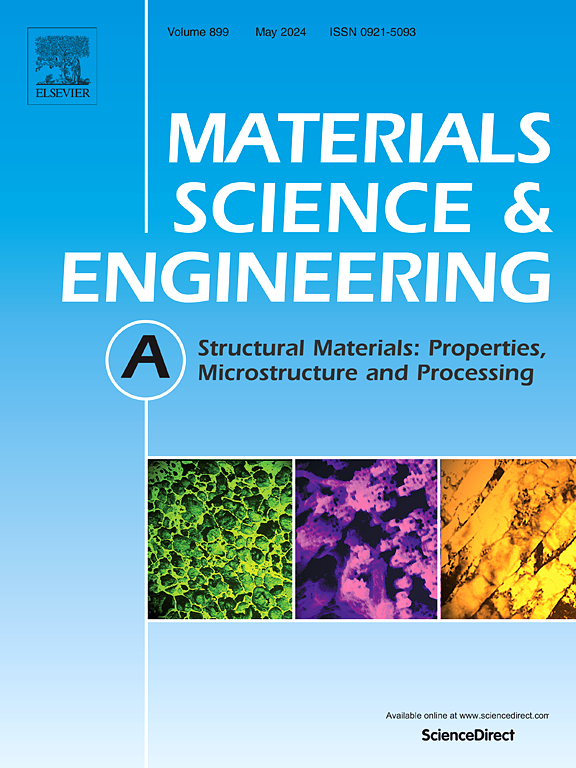Enhanced strength and strain hardening in a dilute Ti-Ru alloy for load-bearing applications
IF 6.1
2区 材料科学
Q1 MATERIALS SCIENCE, MULTIDISCIPLINARY
引用次数: 0
Abstract
Ruthenium (Ru) is often added to Ti alloys to enhance corrosion resistance, and due to its inherently high hardness, dilute Ti-Ru alloys could have both high strength and excellent corrosion resistance, which are appealing properties for load-bearing biomedical applications. However, limited knowledge exists regarding the microstructures, mechanical properties, and deformation mechanisms of Ti-Ru alloys. In this study, a Ti-1.5Ru at.% alloy with a duplex microstructure consisting of α blocks embedded within a matrix containing α′ martensites and retained β was prepared. Microstructural analyses confirmed that both α blocks and α′ martensites maintained the classical Burgers orientation relationship with the retained β. Nanoindentation experiments demonstrated higher hardness in the α blocks than in the matrix regions. Room-temperature tensile tests revealed excellent mechanical properties, including Young's modulus of 98 GPa, yield strength of 987 MPa, ultimate tensile strength of 1237 MPa, and significant strain hardening, resulting in 5.7 % uniform elongation. The high strength of this Ti-1.5Ru alloy can be attributed to the refined duplex microstructure, while the dislocations in the α blocks, along with stress-induced α′ and α″ martensites in the retained β, contributed to the observed strong strain hardening. This study sheds light on the potential load-bearing biomedical applications of high-strength dilute Ti-Ru alloys, offering microstructural robustness and promising mechanical performance.
用于承重应用的稀 Ti-Ru 合金的强度和应变硬化性能增强
通常将钌(Ru)添加到钛合金中以增强其耐腐蚀性,由于其固有的高硬度,稀Ti-Ru合金可以具有高强度和优异的耐腐蚀性,这对于承载生物医学应用具有吸引力。然而,关于Ti-Ru合金的显微组织、力学性能和变形机制的知识有限。在本研究中,Ti-1.5Ru at。制备了由α块状嵌套在含有α′马氏体和保留β的基体中的双相组织的合金。显微组织分析证实,α块体和α′马氏体均与残留的β保持经典的Burgers取向关系。纳米压痕实验表明,α块区的硬度高于基体区。室温拉伸试验显示了优异的力学性能,杨氏模量为98 GPa,屈服强度为987 MPa,极限拉伸强度为1237 MPa,应变硬化显著,伸长率为5.7%。Ti-1.5Ru合金的高强度可归因于细化的双相组织,而α块中的位错以及残余β中应力诱导的α′和α″马氏体导致了强应变硬化。该研究揭示了高强度稀Ti-Ru合金的潜在承载生物医学应用,提供了显微结构坚固性和有希望的机械性能。
本文章由计算机程序翻译,如有差异,请以英文原文为准。
求助全文
约1分钟内获得全文
求助全文
来源期刊

Materials Science and Engineering: A
工程技术-材料科学:综合
CiteScore
11.50
自引率
15.60%
发文量
1811
审稿时长
31 days
期刊介绍:
Materials Science and Engineering A provides an international medium for the publication of theoretical and experimental studies related to the load-bearing capacity of materials as influenced by their basic properties, processing history, microstructure and operating environment. Appropriate submissions to Materials Science and Engineering A should include scientific and/or engineering factors which affect the microstructure - strength relationships of materials and report the changes to mechanical behavior.
 求助内容:
求助内容: 应助结果提醒方式:
应助结果提醒方式:


